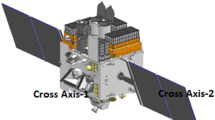Abstract
To better understand the Earth environment and climate change, to mitigate its effects and to provide emergency services, ensuring civil security, future European Earth observation (EO) infrastructures will heavily rely on operational satellite missions. To ensure continuous and timely provision of spaceborne Earth-observation data, these missions will be characterized by high temporal resolution, high availability, low latency and enhanced synergies between different observation products. These goals will likely be achieved by deploying multi-asset satellite systems, such as constellations. In order to design robustly the architecture of these EO systems, given a certain set of observational requirements, OHB System AG has developed a methodology and the associated tools, to optimize the multi-asset system, taking into account physical and technical constraints. In general, for a specific repeating ground track Sun-synchronous orbit and a given number of spacecraft, one (or more) optimal orbital configuration(s) (i.e. anomaly separation on the same orbit) exists that allows achieving full global coverage in a prescribed number of days and minimizes the required swath size. The objective of this paper is to define the optimization model associated to this problem: the swath size is a key design parameter, most of the time constrained by mission requirements and/or technology readiness. Both Non Linear Programming and Mixed Integer Linear Programming are proposed to solve the optimization problem and are investigated in the paper: the formulation is derived and advantages and drawbacks of each are detailed. Finally, the two formulations are tested with different software and on multiple study cases: the effectiveness of the developed methodology is supported by application and validation examples.










Similar content being viewed by others
Notes
This is true as long as the only considered orbital perturbation is the second zonal harmonic J2. In reality, a certain ground track control effort is needed to maintain the orbit synchronized with the Sun.
A tolerance of maximum one orbital period on the imposed revisit time has to be sometimes considered in order to complete the last orbit for the last day.
Again, a tolerance of one orbital period has to be considered to let the last pass to be completed..
References
Nadoushan MJ, Assadian N (2015) Repeat ground track orbit design with desired revisit time and optimal tilt. Aerosp Sci Technol 40:200–208
Boain RJ (2004) A-B-Cs of Sun-Synchronous orbit mission design. In: 14th AAS/AIAA space flight mechanics conference, Maui, Hawaii, February 8–12
Nocedal J, Wright S (2006) Numerical optimization, series in operations research and financial engineering. Springer, New York
Bazaraa MS, Sherali HD, Shetty CM (2013) Nonlinear programming: theory and algorithms. Wiley, New York
Boyd S, Vandenberghe L (2004) Convex optimization. Cambridge University Press, Cambridge
Wolsey LA (1998) Integer programming. Series in discrete mathematics and optimization. Wiley-Interscience, New Jersey
Bertsimas D, Weismantel R (2005) Optimization over integers, vol 13. Dynamic Ideas, Belmont
The MathWorks Inc. (2000) Optimization block-set, Function: fmincon, MATLAB R2015b, The MathWorks Inc., Natick, MA. https://www.mathworks.com/help/optim/ug/fmincon.html
Collette Y, Baudin M, ATOMS optimization blockset, function: ipopt, Scilab5.5.2, http://forge.scilab.org/index.php/p/sci-ipopt/
I. Griva, S. G. Nash, and A. Sofer, Linear and nonlinear optimization, Vol. 108. Siam, 2009
The MathWorks Inc., Optimization blockset, Function: intlinprog, MATLAB R2015b, The MathWorks Inc., Natick, MA, 2000 https://www.mathworks.com/help/optim/ug/intlinprog.html
IBM Analytics, ILOG, Inc. (2000) AMPL CPLEX System Version 7.0, Incline Village, NV. https://www.ibm.com/analytics/cplex-optimizer
Free and Open Source Software in Education Project, FOSSEE Optimization Toolbox, Functions: symphony, symphony-mat, FOSSEE, IIT Bombay, India, https://scilab.in/fossee-scilab-toolbox/optimization-toolbox
Author information
Authors and Affiliations
Corresponding author
Rights and permissions
About this article
Cite this article
Rafano Carnà, S.F., Benvenuto, R., Bewick, C. et al. Multi-asset System Design Methodology for Earth Observation. Adv. Astronaut. Sci. Technol. 1, 229–242 (2018). https://doi.org/10.1007/s42423-018-0002-8
Received:
Revised:
Accepted:
Published:
Issue Date:
DOI: https://doi.org/10.1007/s42423-018-0002-8




